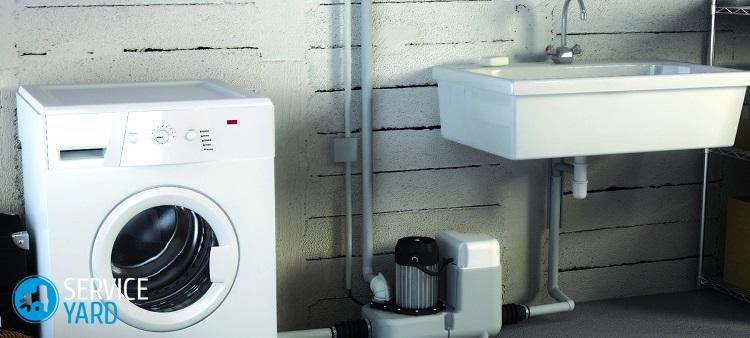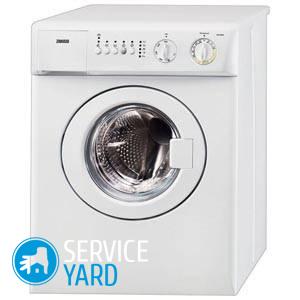Rules for installing the washing machine

If you are tired of washing by hand and decide to purchase a machine, it is important to consider that one purchase is not enough to immediately start using the equipment. To save money and not even pay for the installation of equipment, try installing it yourself, using the installation rules of the washing machine. But first, check with sellers if the warranty for this household appliance is lost if you install it yourself. If the warranty remains, then you can safely engage in the installation yourself, having previously read our article.
to contents ↑Proper installation of the washing machine
The process of connecting a washing machine with your own hands is technically not complicated, but rather responsible. It is important to consider that the probability of electrical breakdown in a washing machine is several times higher than in a dishwasher. Therefore, for safe and long-term operation of the machine, it is necessary to properly prepare the workplace for it.
This can be done both independently and with the help of specialists, because the right choice depends not only on your desire and skill. Basically, everything depends on grounding.
Well-established trade organizations often include the cost of installation in the cost of goods. It seems to be not bad, because the premium itself is small (since the matter is put on stream). But there are several nuances:
- Reputable firms sell modern expensive models, and if you want to purchase a budget option, you will not find it there.
- Traders are not involved in protective grounding equipment, since it must be equipped in advance. In case of his absence, the company refuses to install. As a result, you lose the premium and guarantee, because the installation rules of a washing machine of any model clearly prescribe that the operation of the unit without grounding or protective devices is unacceptable.
to contents ↑Important! Based on these factors, before choosing, buying and proceeding with the installation of household appliances on your own, check the availability of grounding in advance. If it is missing, provide it with your own hands. On our portal of useful tips in a separate post we told how to ground the outlet in the apartment.
Installation steps
For the washing machine to serve for a long time, you must follow the rules for installing the washing machine and do everything in stages. Immediately identify and note the list of steps that you need to go through. Studying the proposed detailed instructions will allow you not only to learn all the rules for installing a washing machine, but to understand them and complete everything correctly and quickly.
Stage number 1 - preparation
- Inspect purchased equipment. If you ordered home delivery when purchasing equipment, then do not rush to sign the courier delivery form. This is one of the first rules for installing a washing machine. Proceed as follows:
- Ask couriers to unpack the washing machine.
- Carefully check the exterior for dents or scratches.
- Gently rock the machine from side to side, and if you hear strange noises and knocks inside the machine, ask to replace the unit.
- If you do not like something, then immediately inform the couriers about it. Do not put your signature on the receipt until all problems are resolved, because you spent a lot of money on the purchase.
- Remove all shipping parts.Engage in the dismantling of all transportation details: blocks, staples, bolts. Read the instructions in advance in order to recognize all the shipping details, because if you turn on the unit without disassembling, then the breakdown of the machine is guaranteed to you.
- Inspect the installation site. We hope that you have previously determined the location of the washing machine, because all measurements - both in height and in width, and all preparatory work must be done before purchase. They include the achievement of such conditions:
- The surface under the machine must be solid (reinforced concrete), any bulges and dents - both on the surface of the walls and floor, are prohibited. Detailed tips from our separate publication will help you. install the washing machine on a wooden floor.
- The equipment should be at least 2-3 cm from the wall. Since it vibrates during operation, the installation rules of the washing machine categorically prohibit putting the unit close to the wall.
- Set the machine in the prepared place using the level. To make the machine stand level and horizontal, use the level. Pay attention to the special supports that are located at the bottom of household appliances - they are adjustable. Lock each leg at the required height using the special counter-nut. Hold it firmly so that during operation, the legs do not untwist.
Important! In the new device models, such supports are located only in front of the unit.

Stage No. 2 - Connecting the device to the water supply
Almost all washing machines are connected to cold water. If there is already a tap for the washing machine at the installation site, then no difficulties will arise. If such an allotment is not provided, then you will have to make all the insets yourself.
Important! For iron pipes you need a welding machine, and for plastic pipes you need a soldering iron. If you do not have either one, then get a crimp bend. It is produced for different pipe diameters. You can install such a tap on both plastic and iron pipes.
You can purchase a bend-clutch in any hardware store or in the construction market. You will need a 15 mm bend or a bit larger, depending on the diameter of your pipes.
To make an independent connection to the water supply, purchase the following parts:
- Tee.
- Valve.
- Adapter from ½ inch thread to ¾ inch thread.
- PTFE sealing tape.
Assemble all the parts together, and when the assembly is assembled:
- Cut the water pipe.
- Insert tee.
- Attach the adapter and hose from the machine to the valve.
Important! In case of emergency groove, the valve will allow you to disconnect the washing machine from the water supply, without blocking the water supply itself.
During installation, use rubber gaskets and bolts for screed and girth.

Stage No. 3 - connection to the sewerage
The installation rules of the washing machine involve not only connecting it to the water supply for supplying water during the washing cycle. It is necessary to draw up and the output system of the spent fluid volume - through the sewer.
To connect to the sewer, prepare the following tools and materials:
- Tee 50 mm.
- Branch with a diameter of 50 mm and a length of 40 cm.
- Coupling.
- Clamp mounting.
- Rubber cuff.
- Air valve 50 mm.
Important! In the room where the unit will be located, it is necessary to ensure free access of the drain hose to the drain point - the correct installation of the washing machine will depend on this.
After completing this work:
- Using a hacksaw for metal, make an entrance for a 12 cm pipe in this place.
- Insert a 50 mm tee and connector into the hole.
- Install the plastic pipes so that they can be freely moved from side to side to install the tee and coupling.
Important! Pay special attention to the sewer riser: in the bathroom, the riser is 10 cm, but in the kitchen it is 2 times smaller.
In more detail, we revealed this topic in our review. "Siphon for a washing machine."

Stage No. 4 - connection to the power supply network
The most difficult stage of work, which is assumed by the installation rules of the washing machine, is its connection to the mains. Here you need to be extremely careful.
Important! The energy consumed by the washing machine is approximately 2.5 kW. Therefore, the room in which the unit is located is considered dangerous, since they have a very high electrical voltage.
Before proceeding with the work, it is necessary to study the design of the machine and prepare additional components. Take on board the following information:
- The latest machines have grounding and double insulation to increase the safety of automatic machines.
- To connect the washing machine to the mains, you must have a special outlet with a built-in grounding contact.
Important! Such sockets are jokingly called “Euro-sockets” because of their high quality, because old sockets are designed for a current of only 6A, and new sockets carry 16A.
- It is better to choose a socket made of ceramic material, since plastic models are unsafe.
- Install the outlet as close as possible to the washing machine, as the unit cord is 1.5 m in length.
- Do not ignore the safety rules and select a quality outlet that has a grounding contact.

Important! All extension cords, adapters, tees noticeably reduce surge protection and increase the risk of fire, and can also cause a short circuit.
Currently new sockets are installed in the bathroom, since it is there that the washing machine is most often located. But do not forget that it is in the bathroom with increased humidity and this threatens with serious consequences.
Important! To reduce the risk of electric shock, install an RCD. It is able to de-energize the electrical circuit during a power surge and emergency.
Stage 5 - test run of the unit
After installing the equipment, conduct a test run of the device. Fill the detergent powder to wash the machine from the factory grease and small debris, start the washing mode. At this time, pay particular attention to the following points:
- How water is poured.
- How fast the water heats up.
- How the machine spins.
- Does the drain run correctly?
Important! If everything works “like a clock”, then you did the installation correctly and you can start using household appliances.

Helpful hints:
- Do not overpay for a valve for hot water and connect the unit to hot water, because such a connection can cause a lot of problems when washing delicate things.
- To reduce noise and vibration in the washing machine, use rubber stands.
- When installing the washing machine, do not use the uncomfortable drain into the bathtub or sink using the standard drain hook. This method has a lot of disadvantages: during the operation of the unit you will not be able to use the sink or bath, in addition, the siphons of the sinks and baths are often clogged and water can overflow.
- In order to prevent sewage water from entering the machine, secure the drain hose about 60-80 cm above the outlet into the sewer.
- The washing machine is equipped with a wire with a euro plug, which means that when connecting, be sure to buy a euro outlet in which there is a third contact for connecting the ground wire. Sometimes such an outlet is included when purchasing equipment.
- Do not build up the drain hose, as in low-capacity machines the drain pump is low-power, and the additional hydraulic resistance of the long hose will overload it. As a result, the pump will quickly fail.
- Be sure to secure the drain hose to prevent it from falling to the floor and flooding the apartment.
to contents ↑Important! And finally, you should pay attention to the fact that the equipment must be monitored from the time of purchase.And a washing machine is no exception to this rule. Be sure to check out the publication "Caring for a washing machine".
Stock footage
In order for the washing machine to work for a long time and not cause problems, install it correctly and ensure reliable grounding. Then washing clothes will not only bring you pleasure, but also save time - both for the washing itself and for troubleshooting.








